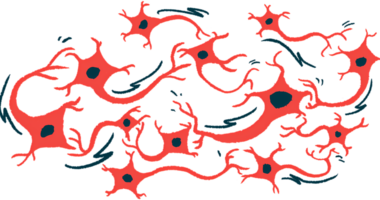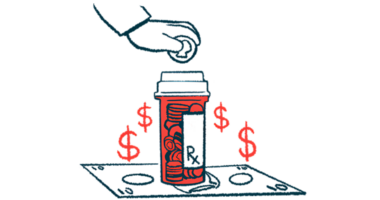Fat-coated Microbubbles May Aid Parkinson’s Treatment by Getting Past Blood-Brain Barrier

Scientists using fat-coated microbubbles have possibly developed away of carrying therapies for Parkinson’s disease directly to areas of the brain where they are needed, without affecting other organs.
The study, “Lipid microbubbles as a vehicle for targeted drug delivery using focused ultrasound-induced blood-brain barrier opening,” was published in the Journal of Cerebral Blood Flow and Metabolism.
The central nervous system (CNS) is protected from the circulatory blood system by a very selective barrier called blood-brain barrier. Its function is crucial, because it protects the CNS from viruses, bacteria, and fungi and other damaging agents. However, it is also impenetrable to medicines that target the brain, such as those used to treat neurodegenerative diseases like Parkinson’s and Alzheimer’s (98% fail to clear this barrier).
Scientists have been trying to penetrate the brain-blood barrier for a long time, and have developed different techniques — intracranial injections, gene therapy and chemical modification of certain drugs — but all have failed to effectively carry a drug to where it is needed without affecting other organs. Now, Dr. Carlos Sierra, together with colleagues at the Columbia University in New York, are reporting positive results at delivering a test molecule directly to the brain.
First, the scientists injected the molecule into lipid-coated, harmless gas microbubbles. Then, they directed ultrasound at a specific region of the brain, making the microbubbles that arrived there from the circulatory system oscillate and increase in size. When the bubbles reach 8 microns, the ultrasound causes them to rupture and open the blood-brain barrier, allowing the treatment to pass through.
“We’ve made a step forward by incorporating the substance we’re interested in into the lipid coating of the microbubbles. This makes the substance stay adhered to the microbubbles and prevents it circulating freely through the body,” Sierra, a physicist and the study’s lead author, said in a press release.
“It does all this, while being non-invasive, reversible and completely safe,” Sierra added.
This study was performed using a fluorescent molecule placed in lipid-coated microbubbles introduced into mice, allowing the scientists to trace their movement and confirm the molecules entered the brain. Investigations also determined the correct parameters, or acoustic pressure thresholds, for effective drug delivery.
“Defining these parameters means we can think about how to transfer the technique to human patients, although it has to be tested on monkeys first,” the researchers said, adding, “it could be applied to diseases like Parkinson’s, Alzheimer’s, Huntington’s diseases, brain tumours, strokes, multiple sclerosis and amyotrophic lateral sclerosis, where we expect to see a very significant rise in the efficacy of treatment and a considerable reduction in side-effects.”
They already started testing potentially therapeutic compounds for Parkinson’s disease “with promising initial findings,” Sierra said.
“The success of this technique in mice, and even in monkeys, can’t guarantee it will be effective in people, but if we continue to get satisfactory results then pre-clinical trials on humans would begin,” he added.






